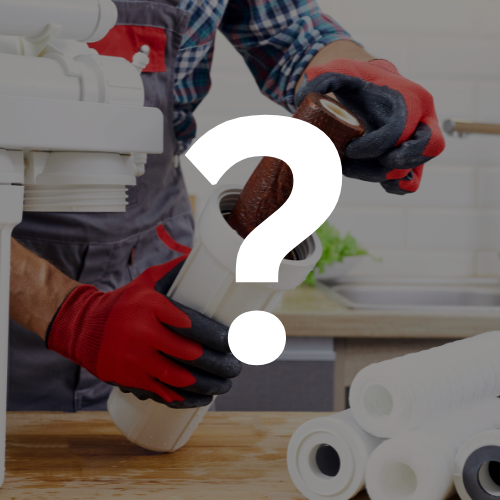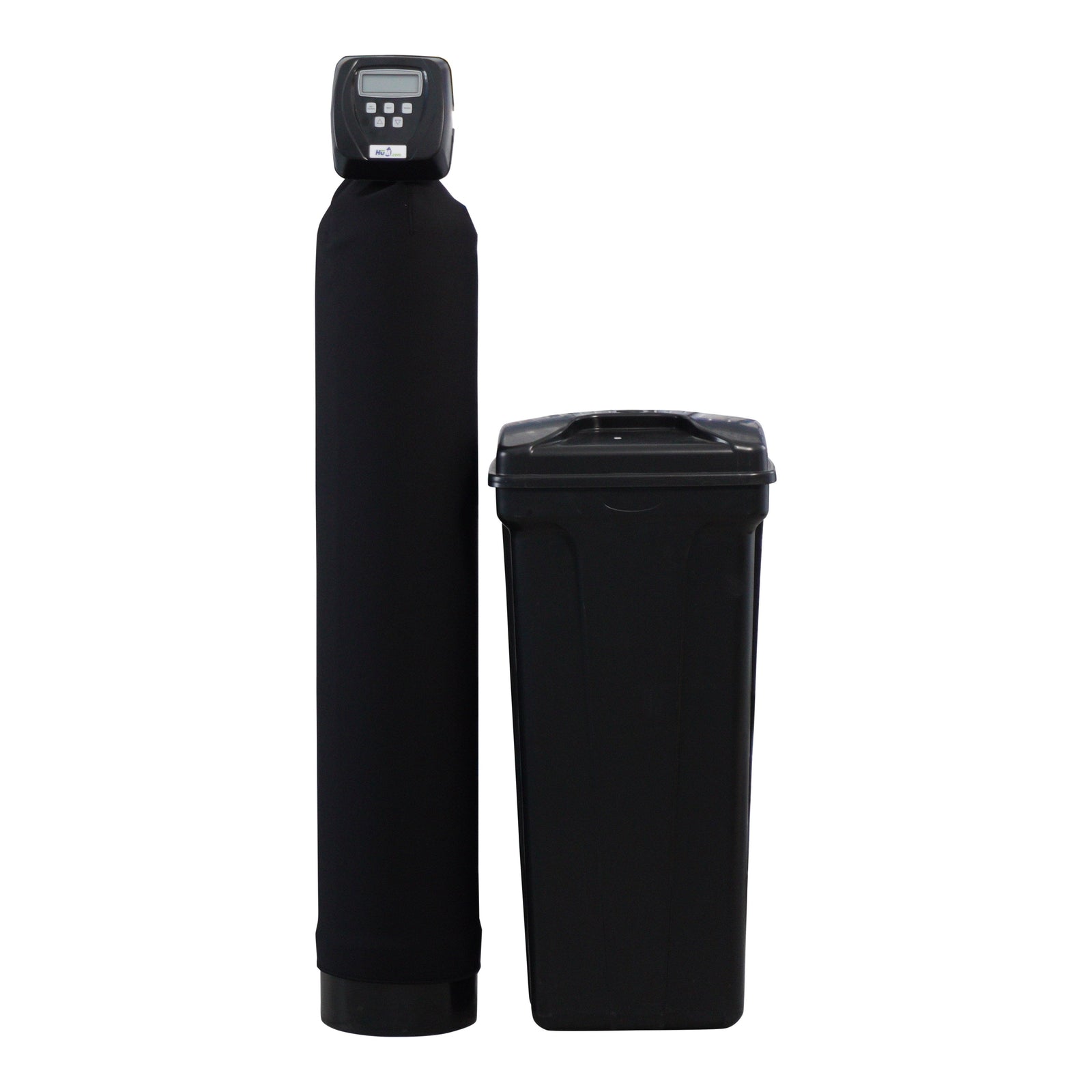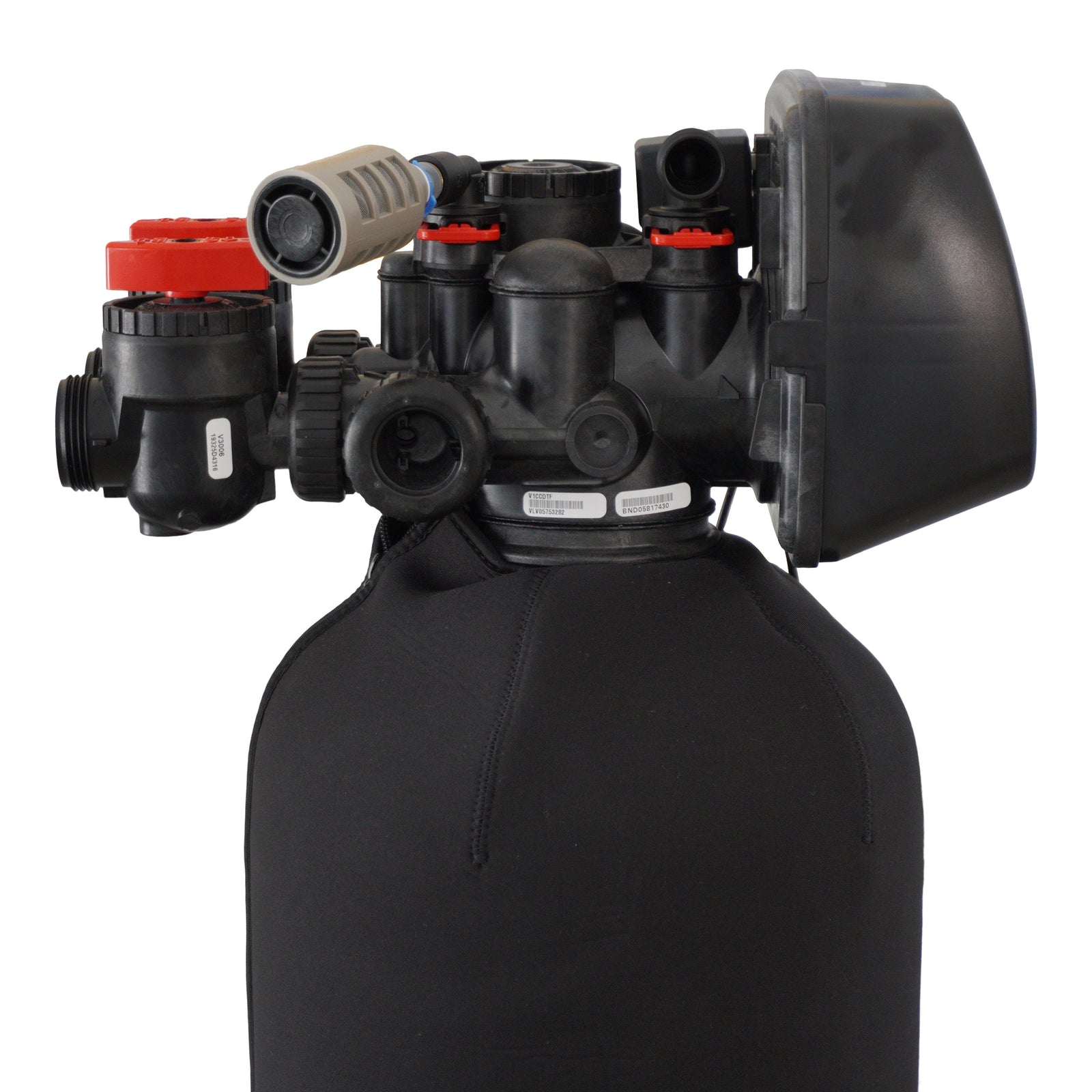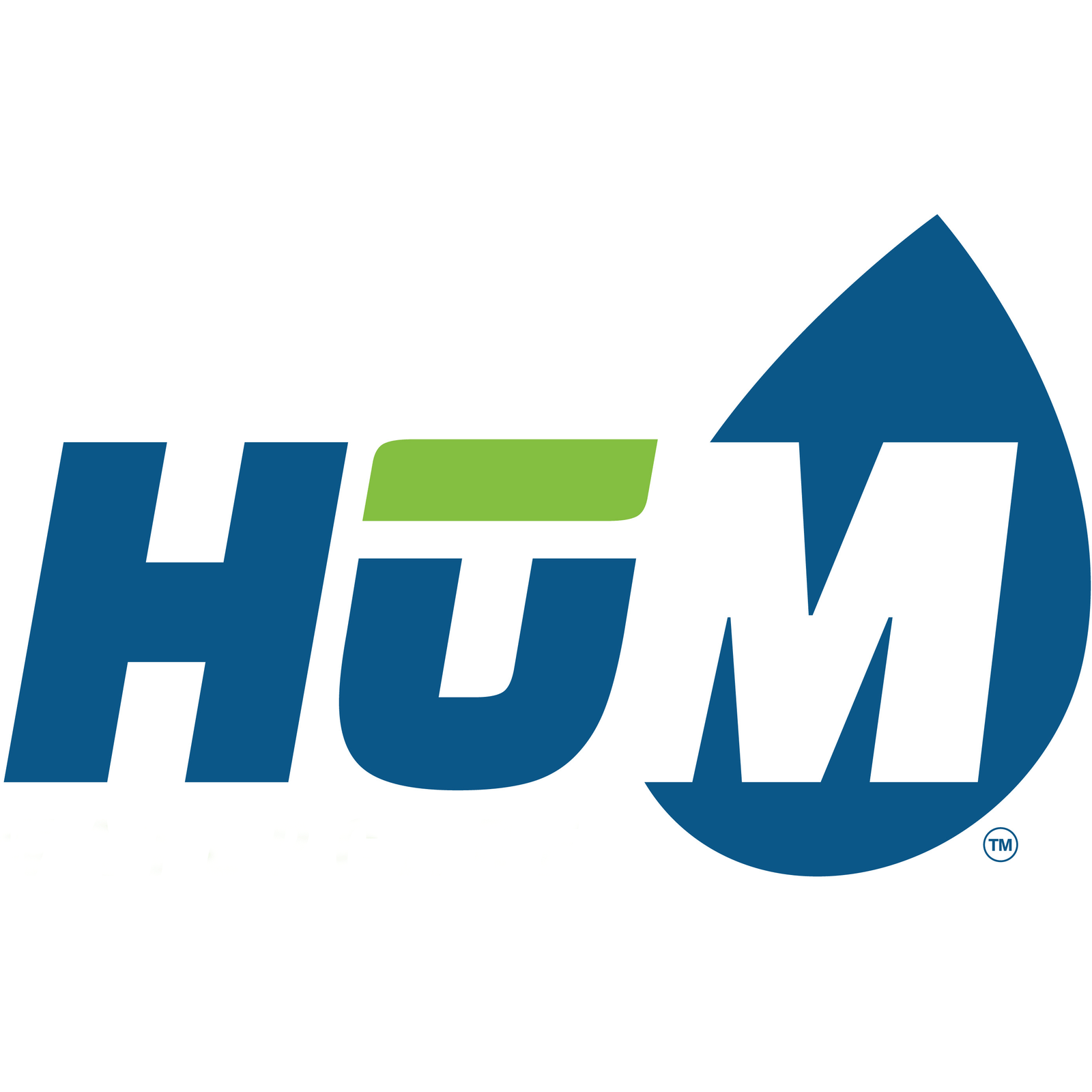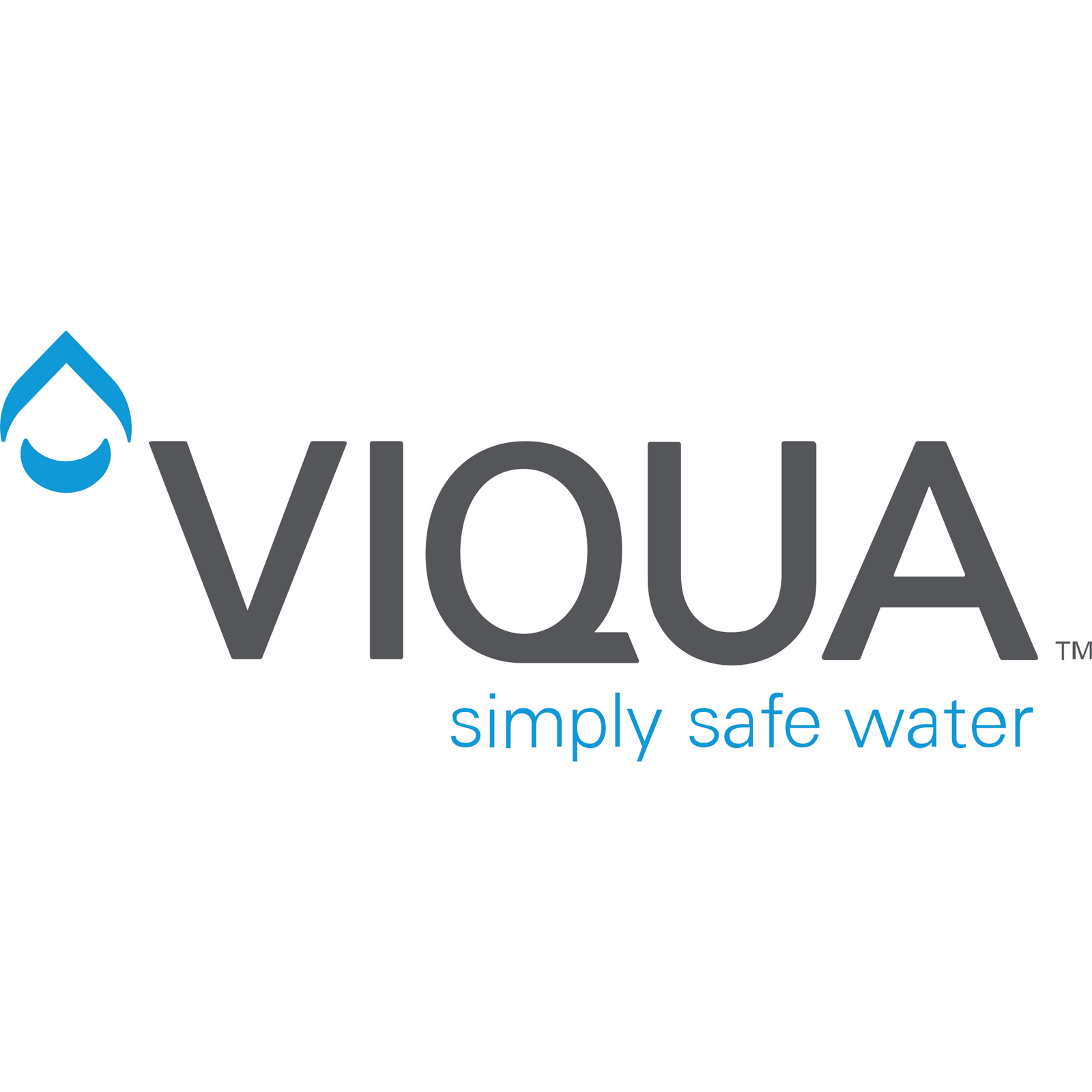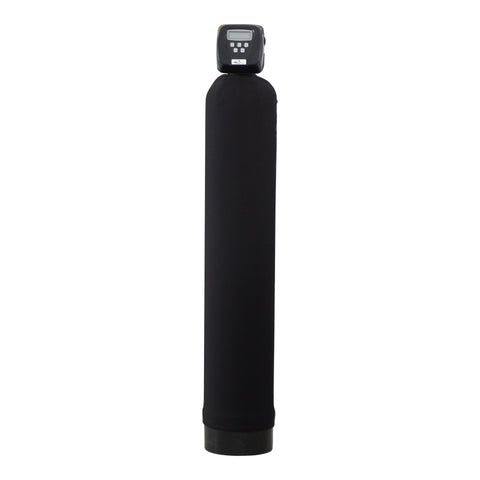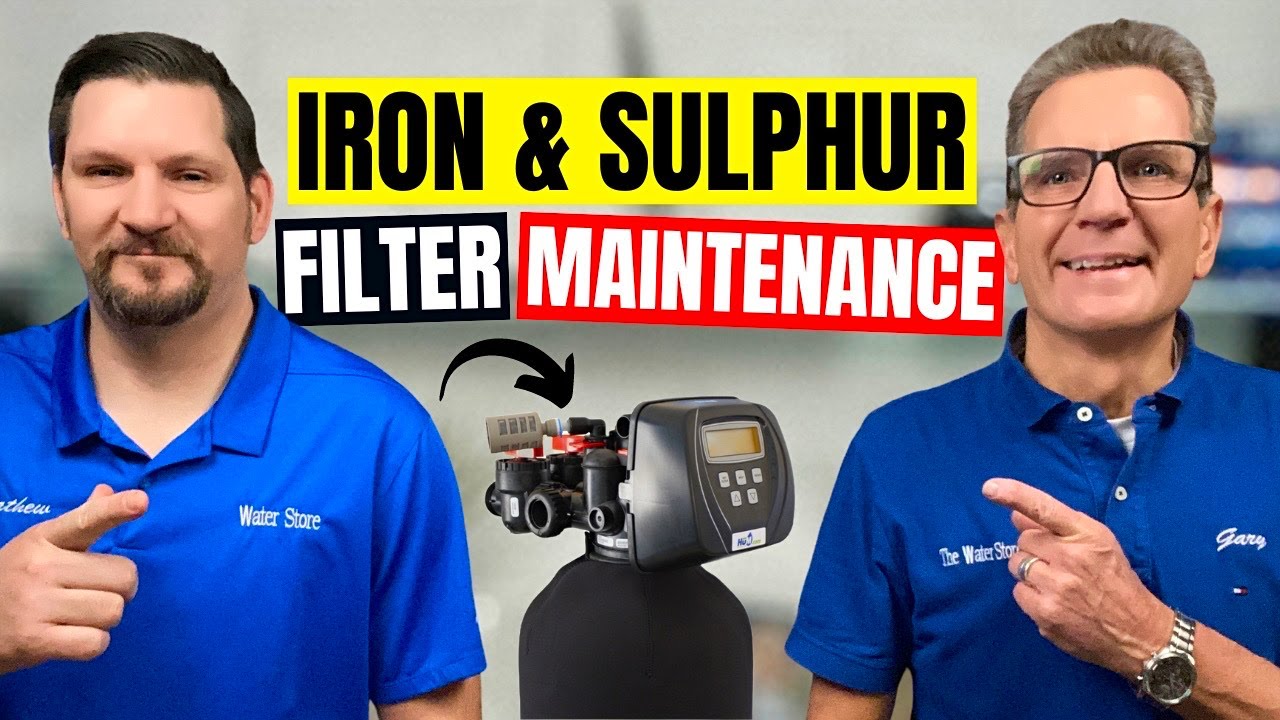
Looking for guidance on maintaining your Air Over Media Iron & Sulphur Well Water Filtration system at your home, cottage or cabin? You've come to the right place! Today, we're sharing expert tips for maintaining a Clack Iron & Sulphur filter. By the end of this blog, you'll have all the information you need to start, what supplies you'll require, and how to maintain it like a pro. Let's dive in!

DETERMINING YOUR IRON & SULPHUR FILTER MAKE & MODEL
Really, the first step is to know what make and model Iron & Sulphur Filter you currently have in your home, cottage or cabin. Most Iron & Sulphur filters are similar in design and manufacture but today we are talking about maintaining the industry's best, the Clack Valved Air Over Media Iron & Sulphur filters. These valves are used by countless manufacturers on their iron & sulphur filters, like our HUM brand, but also on ones found at Water Depot, Nelsen and many others.
Not sure if yours has a Clack valve? Just look at the top and the back of the valve. If you see red bypass valve handles that are arrow-shaped, yours is a Clack valve like ours!
FOB/C/K Iron & Sulphur Filters: What is it?
FOB/C/K Iron & Sulphur Filters are designed to eliminate iron staining and the unpleasant rotten egg smell that can be present in your water. The best part? This system is completely chemical-free, providing a safe and natural solution for your water needs. Unlike other filtration systems, FOB/C/K filters don't require any filter replacements, saving you time and money.
Types of Iron & Sulphur Filters
FOB, FOC, FOK... All of these Iron & Sulphur Filters are very similar in design and will produce similar results in removing iron and that stinky sulphur smell from your water. The difference between each lies in the type of media in the system!
-
Chemical Injection Systems: Chemical injection systems are an effective solution for tackling iron and sulphur issues in your water. These systems work by injecting specific chemicals into the water supply to neutralize and remove iron and sulphur. They are easy to install and require minimal maintenance. With chemical injection systems, you can enjoy clean and odour-free water without the hassle.
-
Ozone Systems: If you're looking for a powerful and efficient method to eliminate iron and sulphur from your water, ozone systems are the way to go. Ozone is a natural oxidizer that effectively breaks down and removes these contaminants. Ozone systems are low-maintenance and environmentally friendly, ensuring you have safe and fresh-tasting water for your daily needs.
-
Chemical-Free Systems: For those seeking a chemical-free approach to tackle iron and sulphur problems, chemical-free systems are the ideal choice. These systems use innovative technologies like catalytic media or specialized filtration media to remove iron and sulphur without the need for any chemicals. Not only do chemical-free systems provide clean and clear water, but they also ensure peace of mind for those concerned about chemical exposure.
-
Greensand Systems Using Potassium Permanganate: Greensand is a granular material that is effective at removing iron and sulphur through a process called oxidation. When combined with potassium permanganate, greensand becomes even more powerful in removing these contaminants from your water. With greensand systems, you can enjoy improved water quality and say goodbye to unpleasant odours and stains caused by iron and sulphur.
Remember, choosing the right iron and sulphur filter system depends on your specific water quality and needs. We've got a really helpful video from Gary the Water Guy here that will help guide you in making the best decision for you and your family!
And if you still are unsure after watching the video, we're always happy to help! Consult with one of our specialized water treatment professionals by emailing info@waterestore.ca to determine the best solution for your home or business.

How to Maintain Your Iron & Sulphur Filter
-
How much maintenance is required?
Because there are no filters to replace, there is little to no maintenance required! System maintenance is minimal and highly dependent on how much iron is in your water, generally done every few years.
-
What service does it need? Can I service one myself and, if so, how often?
Clean the injector anywhere from once per year to once every 10 years — or better yet replace it, as cleaning it can be tedious and the injector is an inexpensive part. This video shows you how: WATCH NOW
-
How often should you clean it?
Again, based on water usage and iron content, it’s a good idea to clean out the DLFC and replace the internal check valve after 4-5 years.
>> For replacement injectors, SHOP HERE!
>> Shop Iron & Sulphur Filter replacement parts!

